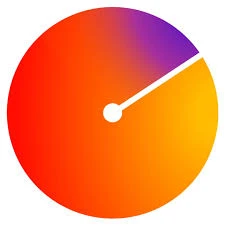As the financial year comes to a close, this is your last opportunity to get on top of your share investments and understand what tax implications are — before it’s too late.
For tax purposes, each financial year is seen as a snapshot in time that is used to assess your tax payable. Because of this, the timing of when investment income is earned, or when you realise capital gains, has important tax implications.
Are you ready for tax time? If not, don’t worry — this article will act as an EOFY checklist and give you all the important information you need to know to optimise your portfolio and maximise your opportunities before the end of the financial year.
Take stock of your portfolio
First, you need to find out what investments you own, and the number of shares/units you own in each.
You could turn to your broker or fund manager for this information, and if you only own investments through a single entity that makes it easy. But for share investors who trade across multiple brokers, or who also own unlisted investments, it’s best to consult Australia’s share registries (Link Market Services, Computershare and Boardroom being the most common) for records of the investments you own.
Once you have this information, you’ll need to put it together in one place. While some investors build a spreadsheet to do this, it is much easier to use Sharesight to track all your investments in a single place. Our integration with TaxTank makes it easy to track your shares, property, crypto, unlisted investments and more — all from a single dashboard.
If you don’t have a Sharesight account, take a second to sign up for a free account before finishing this article.
Build a complete picture of your finances
Once you’re tracking all your investments in one place, you will need to establish the income and capital gains made on your investments during the current financial year.
Share dividend and fund distributions are a good place to start. Records of the income you received during the financial year can be found by running Sharesight’s taxable income report. Once you have this information, you can easily calculate your total income from dividends and distributions.
Have you sold investments this financial year? If so, there will likely be capital gains tax implications. To calculate the capital gains tax on the sale of a parcel of shares, you’ll need to find out the cost price of the shares sold, and the sale price/quantity sold in any trades you made during the financial year. You can find this information from the broker or fund manager you used to make the trades.
It’s also important to note that Australia permits multiple methods to calculate capital gains tax on shares. Using different sale allocation methods such as first-in-first-out, highest-in-first-out and last-in-first-out can impact the cost price of the shares sold (and thus the capital gain made) if multiple parcels of shares were purchased throughout the financial year at different prices.
Fortunately, Sharesight’s capital gains tax report makes it easy to calculate capital gains and losses on investments sold during the year. Built to ATO rules, the capital gains tax report allows investors to calculate the optimal sale allocation method for each holding sold for their individual tax position.
While optimising the choice of sale allocation methods is critical to not pay more capital gains tax than is required, at this point, knowing the size of your realised capital gains or losses during the financial year will let you make the most of the time left before EOFY.
Optimise your tax position
Now that you’ve got the full picture of your investments, do you know how your investments have performed? If you’ve made large capital gains during the year, there could be an opportunity to engage in tax loss selling strategies before 30 June to minimise your taxable income.
Tax loss selling is a strategy that involves selling an investment at a loss to offset a capital gains tax liability during the financial year. It’s a strategy you can use year-round, but is particularly useful in the lead-up to EOFY, when you have a better picture of your capital gains or losses for the year.
Tax loss selling example
An investor has recorded large capital gains during the year, but still holds shares in Stock X in their portfolio, purchased in 2021 at $1.87 per share. With Stock X shares now valued at $1.16, the investor can sell their shares during this financial year to realise the capital loss and offset the earlier gains from other sold shares.
Sharesight’s unrealised capital gains tax report makes it easy to model potential tax loss selling opportunities like the above in your portfolio. The report allows you to choose from a range of different sale allocation methods, with the results broken down into short and long-term capital gains (which incur different CGT discounts), as well as unrealised capital losses.
Tax loss selling is within the ATO rules, but you must keep in mind that the ATO seeks to prevent abuse of this strategy, and does not look favourably on wash sales. This is where an investor sells shares right before EOFY to incur a tax loss, then repurchases shares in the same asset for a similar price early in the new financial year.
EOFY doesn’t have to be stressful
Whether you’re working with an accountant or filing your own tax return, it’s important to be a prepared investor. That means taking ownership of your investment decisions, tracking your own investment portfolio, and implementing strategies to ensure you aren’t paying more tax than necessary. Fortunately, with the rise of online tools — from your fund manager, to share registries, to Sharesight and TaxTank — it’s now easier than ever to make the most of EOFY.
If you haven’t already, sign up to Sharesight to start your free trial and simplify tax and investment management with Sharesight and TaxTank.






